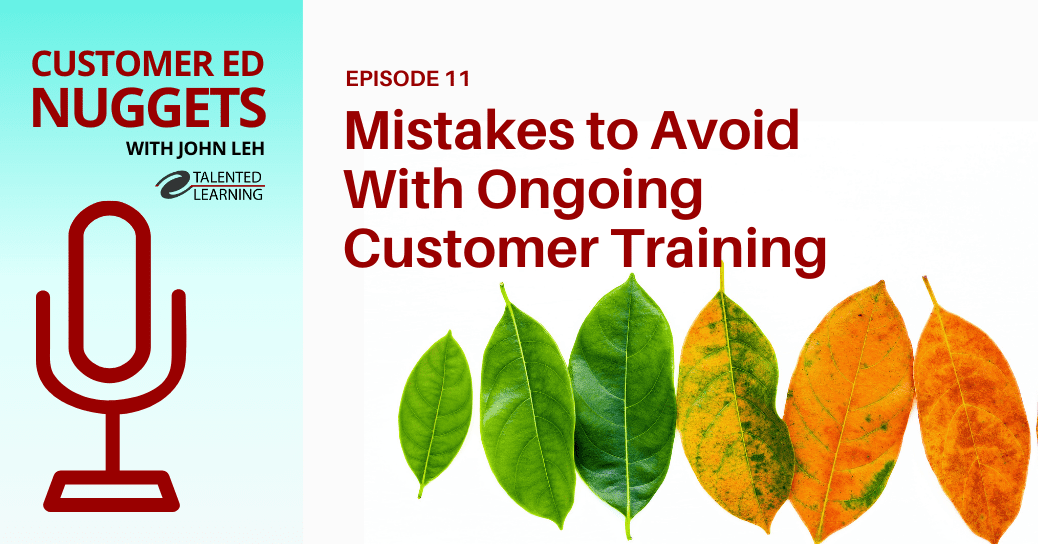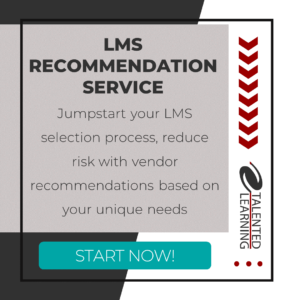
By our estimates, more than 800 LMS vendors compete in today’s learning platforms marketplace in 2019 (up from 600 we originally tracked in 2014). These LMS vendors range from global software companies to tiny cloud vendors.
Why so many? How do they all survive? Who is buying these systems? And what are they accomplishing with them?
I believe this spike can be explained by a combination of factors – primarily the rise of cloud computing and software-as-a-service (SaaS) business models, as well as growing interest in extended enterprise learning.
The Impact of the Cloud and SaaS Business Models
The cloud has lowered the barrier of market entry for LMS vendors. New LMS vendors with minimal investment can create a SaaS cloud LMS of limited scope to target a specific business problem, industry or region with a low-cost solution.
The SaaS model implies that the vendor puts its LMS online in the cloud, and all of their customers access the same LMS via a web browser.
Every customer has its own unique, secure area with its own content, users and business rules, and is unaware of any fellow clients on the common platform.
This approach eliminates many technical considerations and implementation tasks/fees. It also simplifies the process, and cost of support and maintenance. This makes it a good deal for buyers and sellers if buyer requirements match seller functionality.
Want a better way to manage the business of learning? Find vendor profiles, reviews, case studies and more in our free Learning Systems Directory…
In a SaaS model, customers pay a monthly or annual fee to use the platform – forever. So with each new customer, the vendor builds an incremental, predictable, profitable and recurring revenue stream.
Revenue is reinvested in expanding functionality to broaden the vendor’s market and price point.
It’s a great business model, and I know over 100 vendors who think so, also!
Extended Enterprise is the Growth Sector
If the cloud and SaaS model made new vendors possible, then extended enterprise learning gave them something in which to specialize.
Corporations have the need to train both internal employees and their extended enterprise audiences – channel partners, customers and prospects. The responsibility to train these distinct learner audiences many times falls to unrelated business units. Each business unit can have its own budgets and buying cycles.
The purchase point for employee LMS initiatives is typically in human resources, while the purchase point for extended enterprise initiatives can be in sales, marketing, channel management or customer service departments.
Unless these groups explicitly decide to work together, they won’t. This leads to multiple LMSs in the same corporation.
Because extended enterprise LMS buyers are not from HR, they do not know the HR nomenclature, making it tough for them to describe their requirements and communicate with HR-focused LMS vendors.
Extended enterprise buyers know, for example, that they want to easily train their customers with online training, but do not know the terms LMS, authoring tool or SCORM. They have a business problem they want to solve, and are looking for the most direct path to qualified, specialist vendors.
In reaction to the market demand, LMS vendors have been founded specifically to target customer, channel, franchise, dealer, customer or prospect use cases.
With unique audience and purchase points, these vendors leave employee learning behind and compete freely anywhere in the global extended enterprise marketplace.
There is no single dominant vendor in extended enterprise learning. This is encouraging even more vendors to enter the market.
LMS Vendor Market Growth: Conclusion
All of these factors have led to a fragmentation of the corporate LMS market. There is now an LMS for every industry, need and budget – from individuals to the largest global corporations. Due to a better license model and technical efficiency of the cloud, new LMS vendors have flooded the market.
Many have chosen to target the extended enterprise market because of the independent, non-HR buying point. Taken together, it is a perfect storm for fierce competition. Fun times ahead!
Thanks for reading!
Looking for For a New Learning Systems?
Make the most of your LMS buying budget. Fill out the form below to schedule an introductory consulting session with our Lead Analyst, John Leh:
Share This Post
Related Posts
The Future of Customer Education: Customer Ed Nugget 16
Customer education is rapidly evolving as organizations embrace new strategies and tech. What does this mean for the future of customer education? See what experts say on this Customer Ed Nuggets episode
Education Strategy Mistakes to Avoid: Customer Ed Nugget 15
What does it take to deliver a successful customer education program? It starts with a solid education strategy. Learn how to avoid common pitfalls on this Customer Ed Nuggets episode
Which LMS is Best for You? New Shortlisting Tool for 2024
How can you find the best learning system for your business? Our LMS shortlisting tool can help. Learn about the 2024 RightFit Solution Grid. Free, reliable guidance based on our independent research
How to Build a Learning-Based Business: Executive Q&A Notes
Building and selling online courses may seem easy, but building a profitable learning-based business is far more complex. Find out what successful leaders say about running this kind of business
The Rewards of Community Building: Customer Ed Nugget 14
What role does community play in your customer relationships? Find out why community building is such a powerful force in customer education on this Customer Ed Nuggets episode
Benefits of Training Content Syndication: Customer Ed Nugget 13
If you educate customers online, why should you consider content syndication? Discover 10 compelling business benefits in this Customer Ed Nuggets episode
Top Marketing Skills to Master: Customer Ed Nugget 12
Successful customer education programs depend on professionals with expertise in multiple disciplines. Which marketing skills lead to the best results?
How to Measure and Improve Partner Training ROI
An educated channel is a successful channel. But how do you know if your educational programs are effective? Learn from an expert how to evaluate partner training ROI
Mistakes in Ongoing Customer Training: Customer Ed Nugget 11
Customer education doesn't stop with onboarding. It pays to invest in ongoing customer training. Learn which mistakes to avoid in this Customer Ed Nuggets episode














FOLLOW US ON SOCIAL